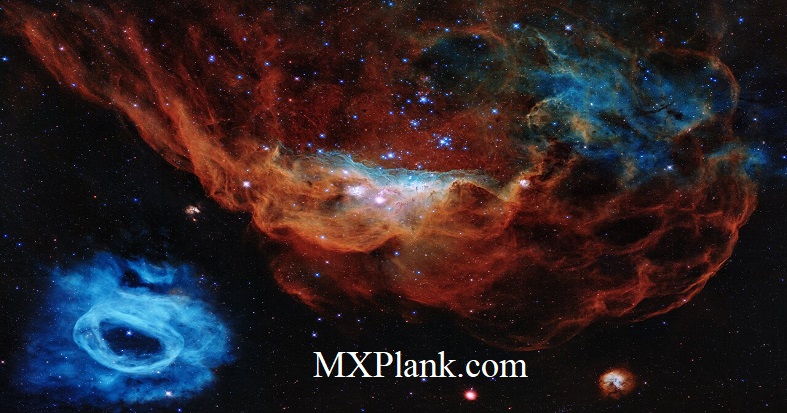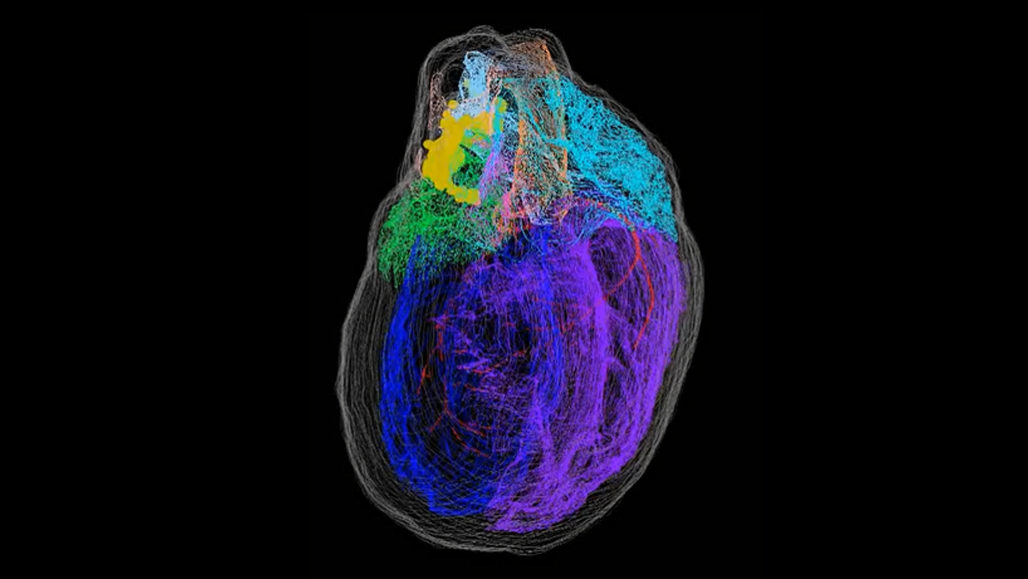
This dramatic image offers a peek inside a cavern of roiling dust and gas where thousands of stars are forming. The image, taken by the Advanced Camera for Surveys (ACS) aboard NASA/ESA Hubble Space Telescope, represents the sharpest view ever taken of this region, called the Orion Nebula.

This image is one of the most photogenic examples of the many turbulent stellar nurseries the NASA/ESA Hubble Space Telescope has observed during its 30-year lifetime. The portrait features the giant nebula NGC 2014 and its neighbour NGC 2020 which together form part of a vast star-forming region in the Large Magellanic Cloud, a satellite galaxy of the Milky Way, approximately 163 000 light-years away.

Nerve cells (yellow) that make up a heart's brain cluster around the top of this reconstructed rat heart, near where blood vessels enter and exit the organ. Other colors show the contours of distinct heart areas, such as the left atrium (green), right atrium (teal), left ventricle (blue) and right ventricle (purple).

Far away in the Ursa Major constellation is a swirling galaxy that would not look out of place on a coffee made by a starry-eyed barista. NGC 3895 is a barred spiral galaxy that was first spotted by William Herschel in 1790 and was later observed by the NASA/ESA Hubble Space Telescope